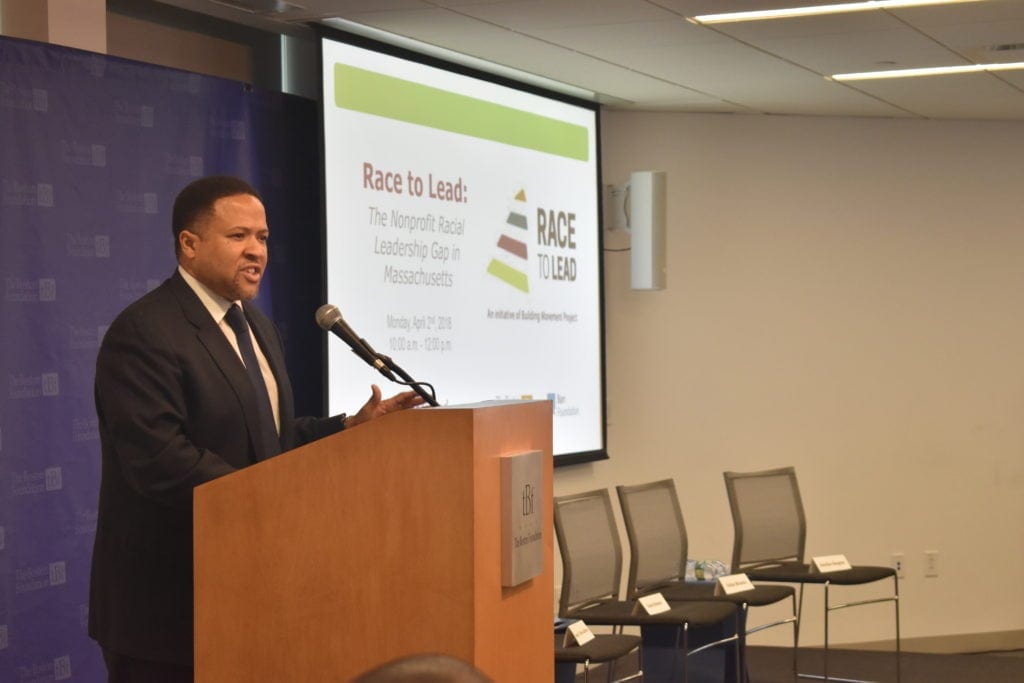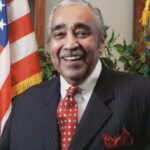Nonprofit leader gap in MA examined in report
Bias, access to wealth networks among reasons, TBF says

A new report published by Building Movement Project indicates that people of color in Massachusetts’ nonprofit sector face distinct barriers when attempting to ascend into decision-making roles, including lack of mentors, exclusion from networks of wealth, and assumptions about their skill and ability to raise funds.
On the web
To read The Nonprofit Racial Leadership Gap in Massachusetts: A Race to Lead Brief, visit: www.tbf.org/-/media/tbf/reports-and-covers/2018/ma_race-to-lead-brief_final.pdf
The report, titled “The Nonprofit Racial Leadership Gap in Massachusetts: A Race to Lead Brief,” sought to answer why there are few leaders and board members of color in the state’s nonprofit sector and what type of challenges they may face.
Researchers from the Building Movement Project analyzed more than 170 surveys from Massachusetts nonprofit leaders and staff and supplemented the data with a series of focus groups. The state’s data was also compared to nationwide data taken from over 4,300 surveys.
The results showed that respondents of color were slightly more interested than their white peers in pursuing leadership roles, with 71 percent saying they were definitely, probably or maybe considering leadership positions in the future, versus 64 percent of white respondents.
For those who responded that they do not have an interest in pursuing leadership roles, when asked why not, 38 percent of participants of color and 21 percent of white participants said they thought their skills are not well suited for an executive director role.
In Massachusetts, 41 percent of white respondents said their work-life balance priorities are not well suited for an executive director role compared to 19 percent of respondents of color who said the same thing. These results differed greatly from the nationwide data which showed an almost equal percentage (34 and 33 percent) between whites and people of color who responded that their work-life situation was not suited for a leadership role.
At the report’s launch event, hosted by The Boston Foundation last Monday, Sean Thomas-Breitfeld, co-director of The Building Movement Project, spoke in depth about the findings and methodology.
“We conducted interviews with dozens of people in the sector in all positions and when we did the survey, we tested out the assumptions from the interviews,” Thomas-Breitfeld said.
“There were not big differences in education between white and people of respondents,” he added.
Frances Kunreuther, co-director of The Building Movement Project, also talked about the findings, specifically about the results that showed 55 percent of respondents of color felt that their race had a positive impact on their career advancement.
“We were like ‘Whoa, where does that come from?’ So we did a focus group on that particular response,” said Kunreuther.
Responses from the focus group hypothesized why, despite the majority of respondents’ belief that their race plays a positive role and their interest in pursuing higher executive roles, there is proportionally fewer people of color in those roles.
“Everyone needs at least one of us in the room … but when I started advocating for where I saw myself going professionally, that’s when I hit more roadblocks,” said a survey participant in a women of color focus group.
Hitting a plateau
The report suggests that although nonprofit workers of color believed their race and background got them through the door, often as a representative of the communities the organization serves, when it came to advancing to leadership positions, their career trajectory plateaued.
Michael James, senior vice president of human resources at Old Colony YMCA disputed the report’s hypothesis that lack of mentors is a significant barrier to executive positions for people of color.
“I don’t think the issue is around mentorship, it’s about sponsorship and organizational will,” he said during the panel portion of the launch event. “That means, someone speaking on my behalf when I’m not in the room where all real decisions are actually made — that doesn’t happen often to a lot of people of color.”
James said that although he has a Master of Business Administration, 20-plus years of experience in human resources and has participated in five leadership programs and has dozens of mentors, he still is not CEO of an organization.
Old money, segregation
A CEO of color who participated in the report’s survey said, “The Boston philanthropic community is very ‘old money’ and because Boston is so segregated, it’s so much harder to get those access points.”
Celina Miranda, executive director of Hyde Square Task Force, agreed with this sentiment.
With over 10 years’ experience working in philanthropy, Miranda said, “I speak foundation talk. I can present to you the work that we do with integrity and authenticity. I can show you the data, but I don’t necessarily have the audience.”
She continued, “My networks are redundant. They tend to be people who look like me and don’t necessarily connect me to deep pockets.”
Orlando Watkins, vice president for programs at The Boston Foundation, said the report was a chance for the foundation leaders to look inward and address systemic and structural barriers that exist within their own organization that contributes to the problem.
“I hope today’s conversation will be a real journey,” he said at the report launch event. “The Boston Foundation is deeply engaged in our own internal look at diversity, equity and inclusion.”






